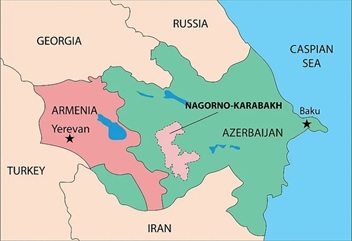7667766266
enquiry@shankarias.in
The breakaway region of Nagorno-Karabakh in the South Caucasus has been at the centre of three wars and multiple clashes between Azerbaijan and Armenia,

The Minsk Group was created by the Organisation for Security and Cooperation in Europe (OSCE) to facilitate talks between Armenia and Azerbaijan to find a peaceful solution to the Nagorno-Karabakh conflict. The Group was co-chaired by Russia, the United States and France.
Reference